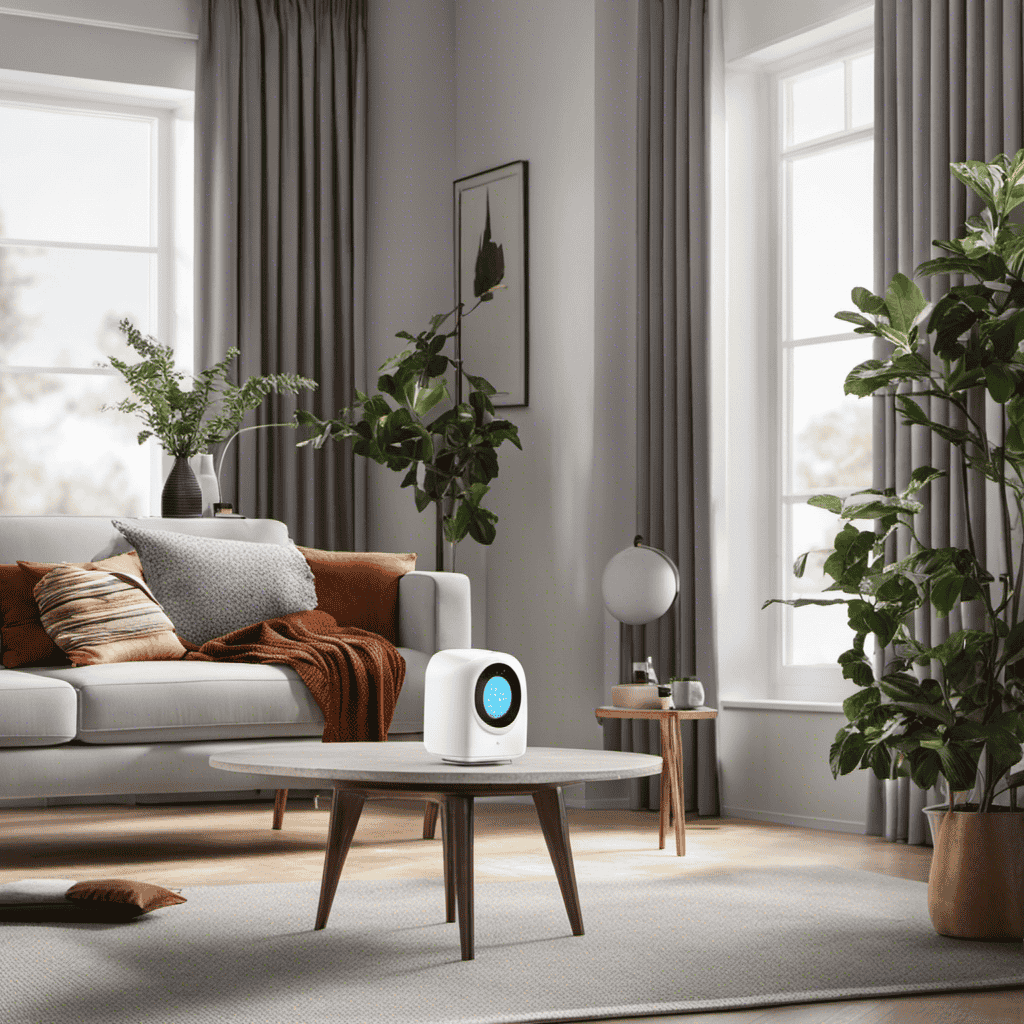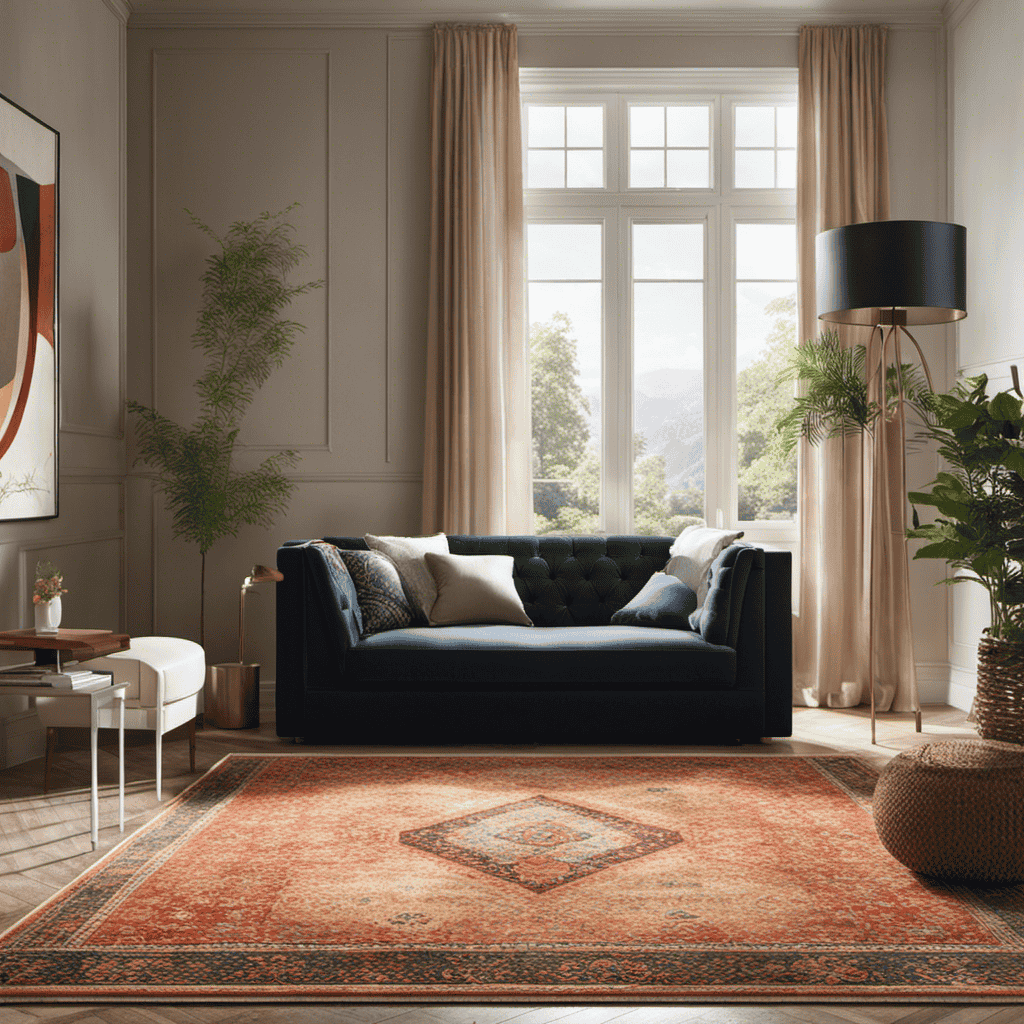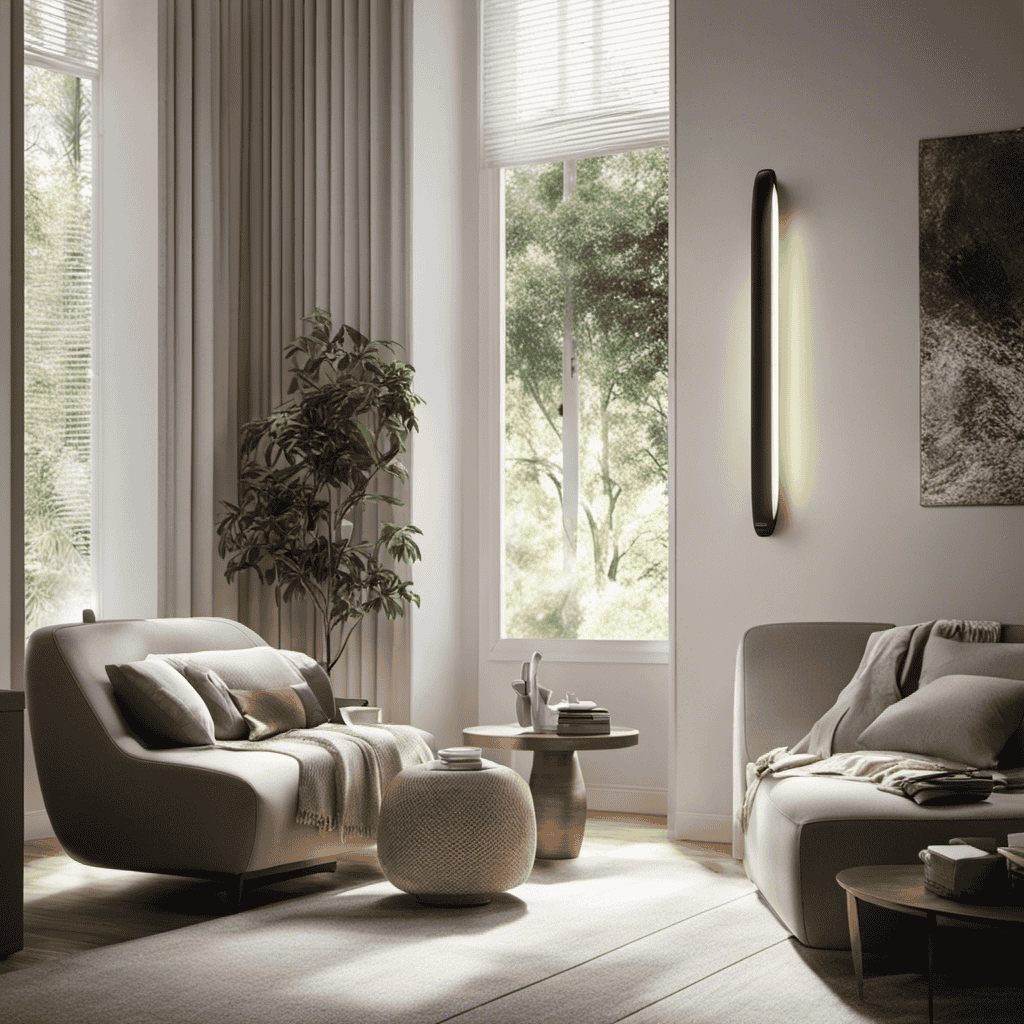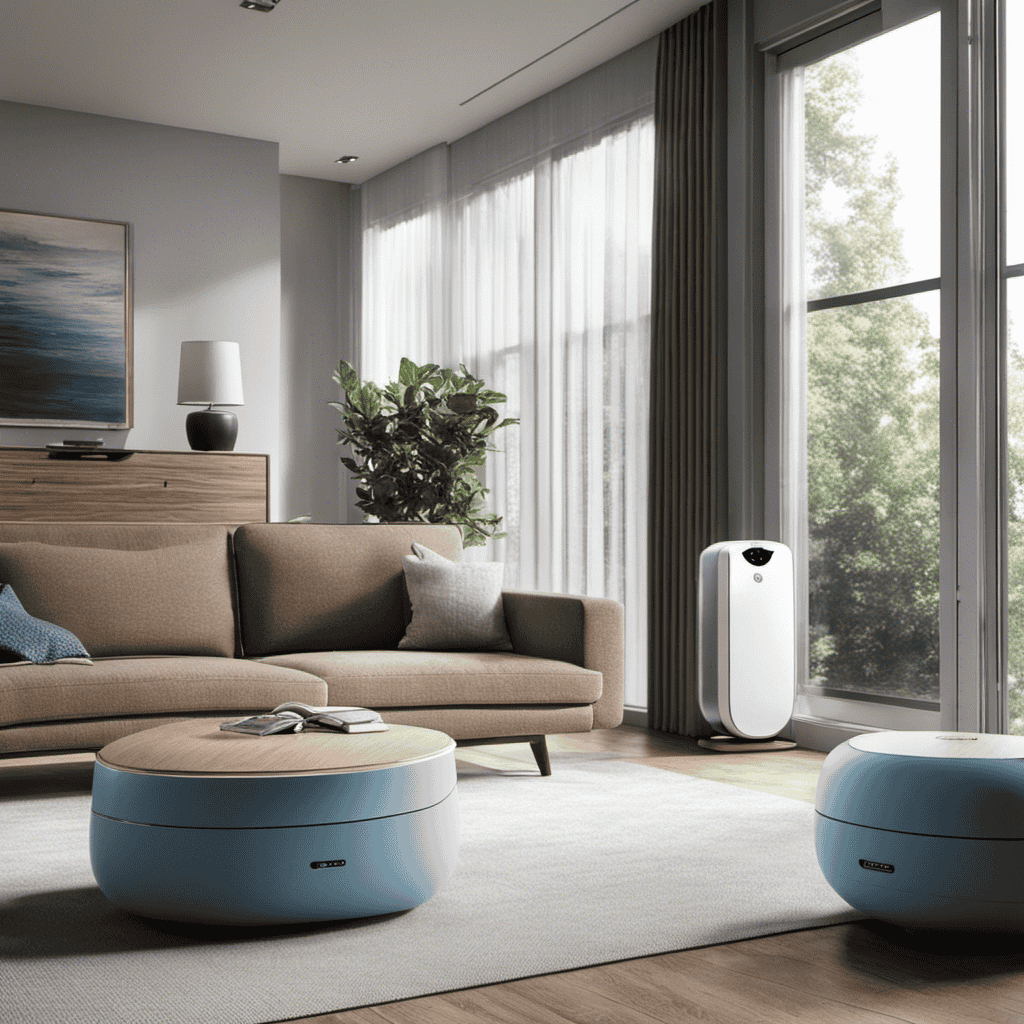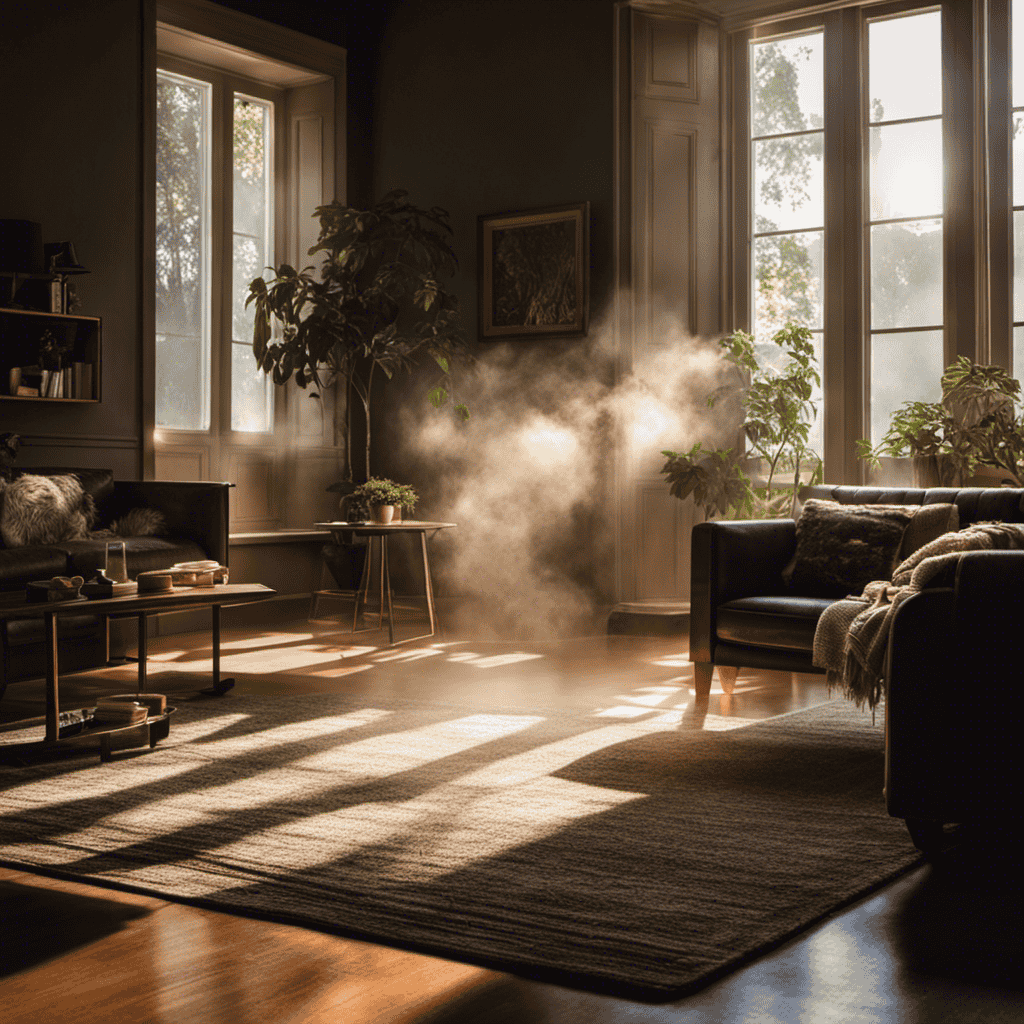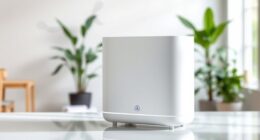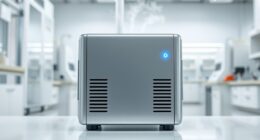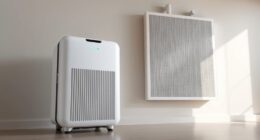You have purchased a HEPA air purifier, and now you may be wondering, “What settings should I use?” No need to fret, I have the answers for you.
In this article, I’ll break down the different settings and help you find the optimal ones for your specific needs. Whether you’re dealing with allergies, dust and pollen, pet dander, or odors, I’ll provide evidence-based recommendations to keep your air clean and fresh.
Plus, I’ll even share energy-saving settings for nighttime use.
Let’s get started!
Key Takeaways
- HEPA air purifiers should be kept on a low or medium setting for everyday use, but the speed can be increased when there are higher levels of pollutants present.
- For allergies, it is recommended to set the air purifier on a higher speed and use the automatic mode for optimal purification.
- For dust and pollen, the air purifier should be set to a higher speed and operated in automatic mode to increase efficiency in trapping particles.
- When dealing with pet dander, setting the air purifier to a higher speed and regularly cleaning and replacing filters is important for effective filtration.
Understanding the Different Settings
You should understand the different settings of your HEPA air purifier. It is crucial to prioritize the importance of air quality in your home or workplace.
Many people have common misconceptions about air purifiers, thinking that they only need to be turned on when there is visible dust or odors present. However, this is not the case. HEPA air purifiers are designed to continuously filter the air, removing particles as small as 0.3 microns.
By understanding the different settings, you can optimize the performance of your purifier. Most HEPA air purifiers have multiple speed options, allowing you to adjust the filtration rate based on the level of pollution in your environment.
It is recommended to keep your purifier on a low or medium setting for everyday use, and increase the speed when there are higher levels of pollutants present. Regularly monitoring the air quality and adjusting the settings accordingly will help ensure clean and healthy air for you and your loved ones.
Recommended Settings for Allergies
To effectively combat allergies, it’s best to set the air purifier on a higher speed and use the automatic mode. This combination ensures that the purifier operates at its maximum capacity, removing a higher volume of indoor pollutants from the air.
By setting the purifier on a higher speed, it increases the airflow and allows for more efficient filtration. The automatic mode, on the other hand, adjusts the fan speed based on the air quality index, ensuring optimal purification at all times.
This is particularly important for allergies, as indoor pollutants such as dust mites, pet dander, and pollen can trigger allergic reactions. By maintaining a higher speed and utilizing the automatic mode, the air purifier effectively reduces the presence of these allergens, providing relief for allergy sufferers.
Optimal Settings for Dust and Pollen
For optimal reduction of dust and pollen, it’s ideal to set the air purifier to a higher speed and let it operate automatically. By doing so, the air purifier can effectively capture and filter out airborne particles, improving indoor air quality.
Dust and pollen particles are larger in size, so a higher speed setting helps to increase the air purifier’s efficiency in trapping them. Additionally, operating the air purifier on automatic mode allows it to adjust its speed based on the detected air quality, ensuring continuous filtration as needed.
Regular maintenance of the air purifier is also crucial for its optimal performance. This includes cleaning or replacing filters, checking for any clogs or obstructions, and keeping the surrounding area clean to prevent dust accumulation.
Overall, proper air purifier maintenance and utilizing higher speed settings can greatly enhance its ability to reduce dust and pollen, providing a healthier environment for you and your family.
Adjusting Settings for Pet Dander
When adjusting the air purifier’s speed settings, remember that higher speeds can be more effective in capturing and filtering out pet dander particles. Pet allergies can be a real nuisance, especially for those of us who love having furry friends at home. To help you control pet hair and minimize allergic reactions, here are three important considerations when adjusting your air purifier settings:
-
High Speed: Setting your air purifier to a higher speed will increase the airflow, ensuring that more pet dander particles are captured and filtered out effectively.
-
HEPA Filter: Make sure your air purifier is equipped with a high-quality HEPA filter. These filters are specifically designed to trap tiny particles like pet dander, reducing the allergens in the air.
-
Regular Maintenance: Clean and replace the filters regularly to maintain optimal performance. This will help ensure that pet dander particles are continuously captured and filtered, improving air quality and reducing pet allergies.
Customizing Settings for Odor Control
When it comes to customizing settings for odor control on your HEPA air purifier, there are three key factors to consider:
-
Odor intensity level: This determines the strength of the purifier’s odor control capabilities. You can adjust it according to your specific needs.
-
Filter replacement frequency: This is crucial in maintaining the purifier’s effectiveness in eliminating odors. Filters can become saturated over time, so it’s important to replace them regularly.
-
Additional scent options: Some air purifiers offer additional scent options, allowing you to further customize the aroma in your living space.
These factors play a significant role in ensuring that your HEPA air purifier effectively controls odors in your home.
Odor Intensity Level
The odor intensity level can be adjusted using the settings on the hepa air purifier. This feature allows you to customize the purifier’s performance based on your specific needs. Here are three key factors to consider when adjusting the odor intensity level:
-
Room Size: Depending on the size of the room, you may need to increase or decrease the intensity level. Larger rooms may require a higher level to effectively remove odors, while smaller rooms may benefit from a lower intensity setting.
-
Air Quality: If the air quality in your home is particularly poor or if there are strong odors present, you may want to set the intensity level to a higher setting to ensure maximum effectiveness.
-
Personal Sensitivity: Everyone has different sensitivities to odors. If you are particularly sensitive or if you find the purifier’s scent overwhelming, you can adjust the intensity level to a lower setting.
By adjusting the odor intensity level, you can optimize the air purifier’s performance to effectively remove odors and improve air quality.
Now, let’s discuss the importance of filter replacement frequency.
Filter Replacement Frequency
To ensure optimal performance, you’ll need to regularly replace the filters in your air purifier. Filter maintenance is crucial in prolonging filter life and ensuring that your air purifier continues to effectively remove pollutants from the air. The frequency at which you should replace the filters depends on various factors, including the type of air purifier and the air quality in your environment.
Here is a table outlining the recommended filter replacement frequency for different types of air purifiers:
| Air Purifier Type | Pre-Filter | HEPA Filter | Carbon Filter |
|---|---|---|---|
| Basic | 3-6 months | 6-12 months | Not required |
| High-end | 6-12 months | 12-18 months | 6-12 months |
| All-in-one | 3-6 months | 6-12 months | 6-12 months |
Regularly replacing the filters in your air purifier is essential for maintaining its efficiency and prolonging its overall lifespan. By following these recommended replacement frequencies, you can ensure that your air purifier continues to provide clean and healthy air in your home.
Now that we’ve covered filter maintenance, let’s explore additional scent options you can use with your air purifier.
Additional Scent Options
If you’re looking to add a pleasant fragrance to your living space, you can explore various additional scent options for your air purifier. Here are three options to consider:
-
Scented Filters: Some air purifiers come with scented filters that release a subtle fragrance while purifying the air. These filters are designed to trap and neutralize odors, leaving your space smelling fresh and clean.
-
Essential Oils: Another option is to add a few drops of your favorite essential oil to the air purifier. Essential oils not only provide a pleasant scent but also offer various health benefits. For example, lavender oil can promote relaxation and better sleep, while eucalyptus oil can help clear congestion and improve respiratory health.
-
Natural Fragrance Additives: You can also opt for natural fragrance additives, such as dried herbs or flowers, to infuse a gentle scent into the air. These additives not only smell great but also add a touch of nature to your indoor environment.
Adding a pleasant fragrance to your air purifier can enhance your overall indoor experience while still enjoying the health benefits of cleaner air.
Energy-Saving Settings for Nighttime Use
For nighttime use, you should set the HEPA air purifier to its energy-saving settings. This ensures an energy efficient operation that not only reduces your carbon footprint but also saves you money on your electricity bill.
By using the energy-saving mode, the air purifier operates at a lower power level, consuming less energy while still effectively cleaning the air in your room. This mode is designed to optimize the purifier’s performance while minimizing its power consumption.
Additionally, setting the purifier to its energy-saving settings can also help reduce noise during sleep. The lower power level means quieter operation, allowing you to enjoy a peaceful and uninterrupted sleep.
Frequently Asked Questions
How Often Should I Clean or Replace the Filters in My Hepa Air Purifier?
I clean or replace the filters in my HEPA air purifier every 3-6 months, depending on the manufacturer’s recommendations. Regular maintenance ensures optimal performance and cleaner air in my room.
Can I Use My Hepa Air Purifier in Multiple Rooms or Should I Have One for Each Room?
To use a hepa air purifier in multiple rooms or have one for each room depends on the size of the rooms and the specific needs. Consider the energy consumption of multiple purifiers versus one efficient unit.
Are There Any Safety Precautions I Should Take While Using a Hepa Air Purifier?
There are important safety precautions to consider when using a HEPA air purifier. It is crucial to follow the manufacturer’s instructions, keep the device away from water, and regularly clean or replace the filters.
Can the Settings on My Hepa Air Purifier Be Adjusted Remotely or Through a Mobile App?
Yes, the settings on my Hepa Air Purifier can be adjusted remotely or through a mobile app. It’s convenient to have the option to control the purifier from anywhere in my home.
How Long Does It Typically Take for a Hepa Air Purifier to Improve the Air Quality in a Room?
Typically, it takes a Hepa air purifier a few hours to improve the air quality in a room. The time can vary depending on factors such as room size, pollution levels, and the purifier’s efficiency.
Conclusion
In conclusion, finding the right settings for your HEPA air purifier is crucial in ensuring clean and fresh air in your home. By understanding the different settings and customizing them based on your specific needs, you can effectively combat allergies, dust, pollen, pet dander, and odors.
Remember to also utilize energy-saving settings during nighttime use to conserve energy. Just like a well-tuned instrument, your air purifier can create a harmonious environment that will make you feel like you’re breathing in a symphony of pure air.
